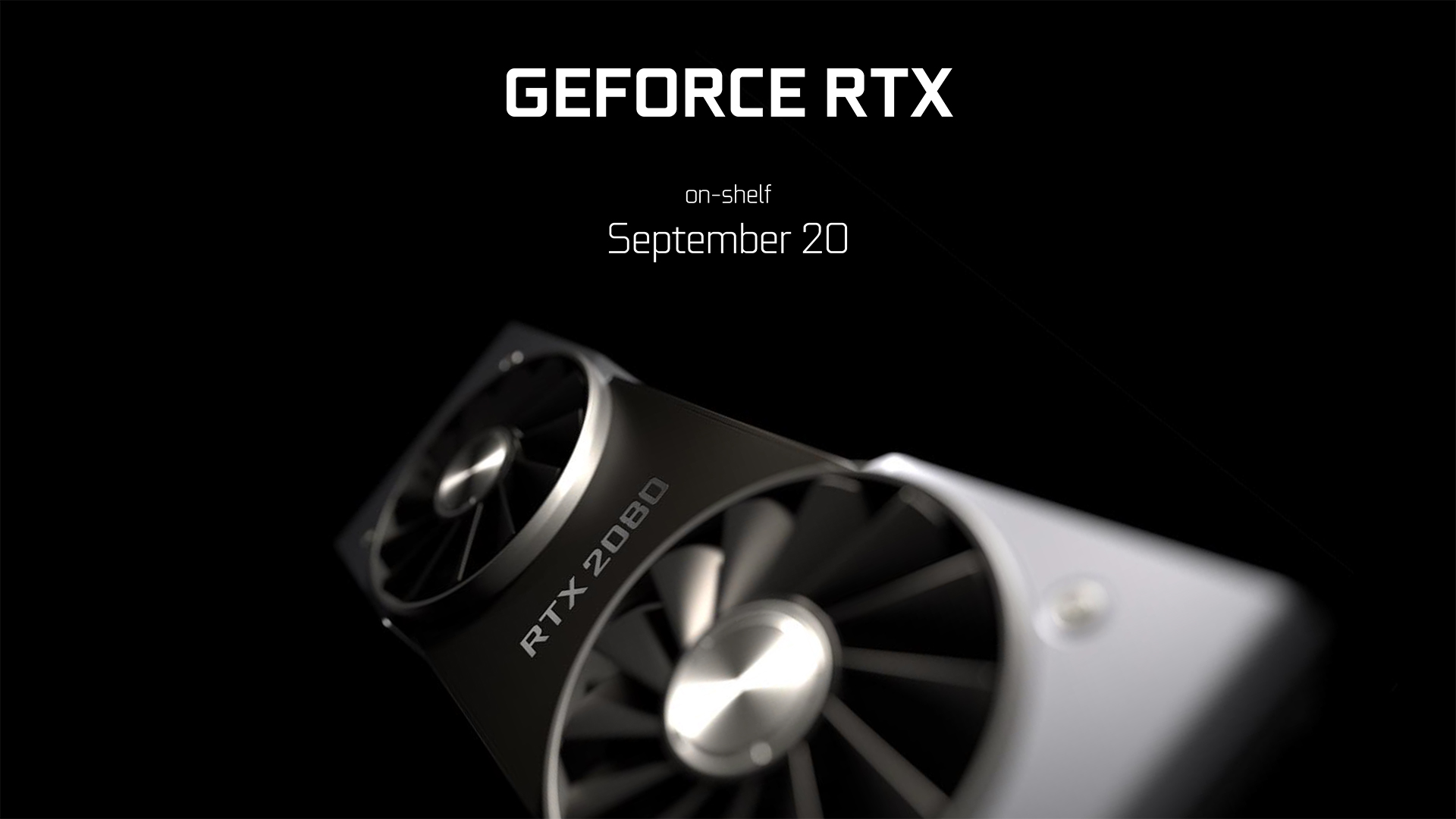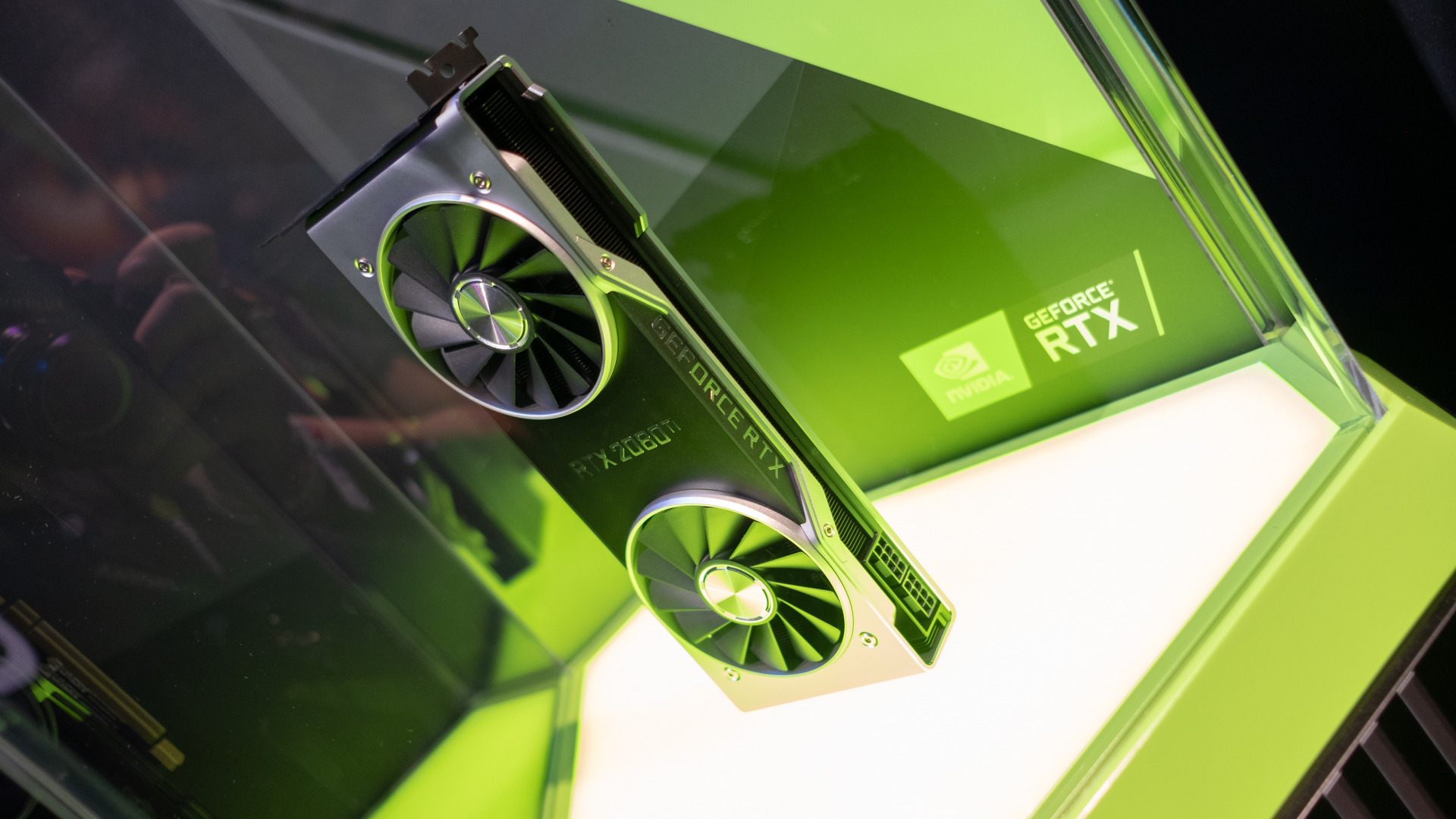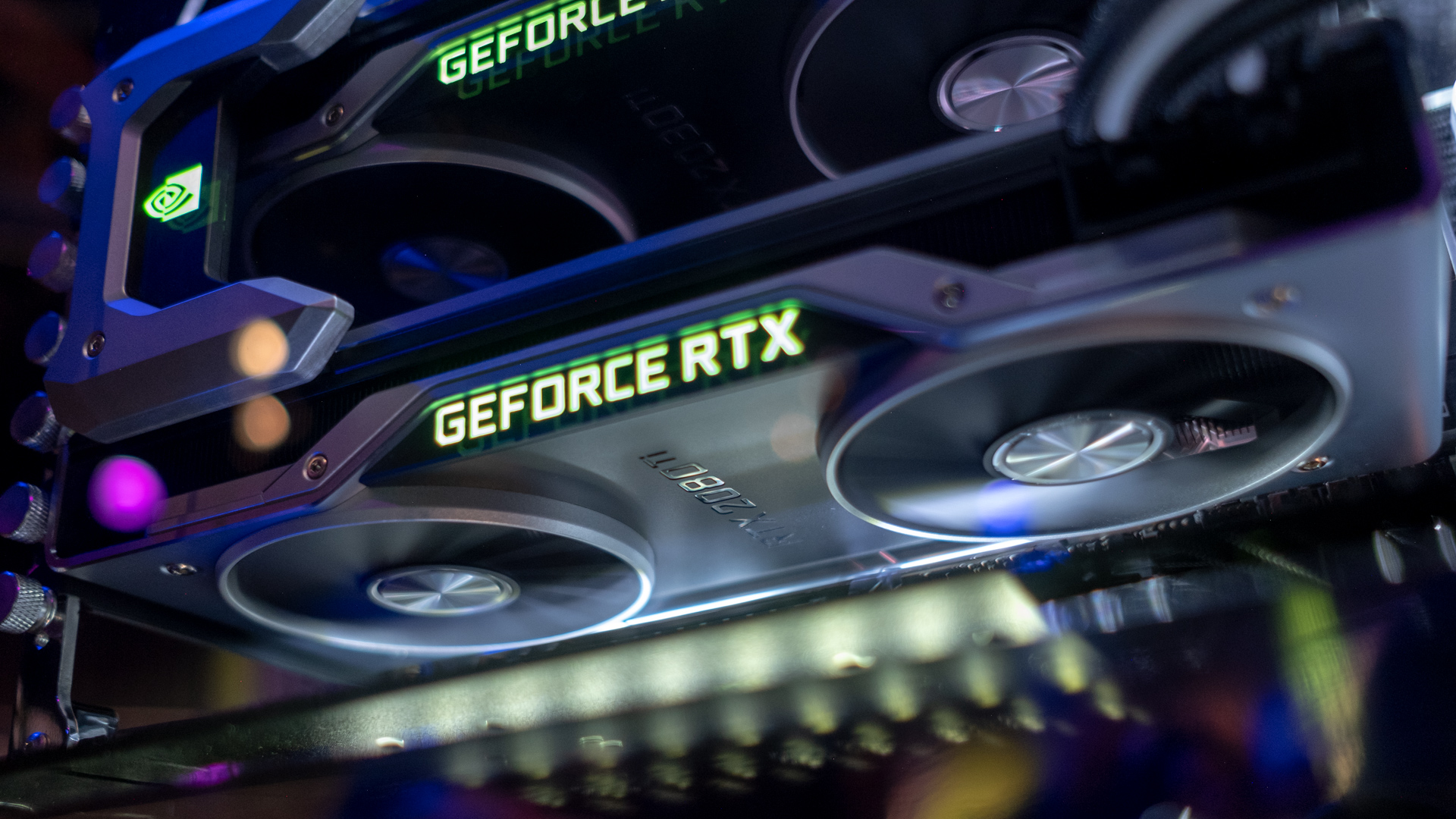Nvidia Turing release date, news and features
The wait for Nvidia’s next-generation Turing graphics cards was excruciating, but finally, the latest and greatest GPU architecture is here. It was a long wait, but the sheer power of Nvidia Turing was definitely worth it.
Now that we finally have Turing-powered Nvidia GeForce RTX 2080 Ti, RTX 2080, RTX 2070 and RTX 2060 cards in our hands, we know they’re the best graphics cards for the games we’ll be playing for the next few years. Nvidia Turing will be behind some creative work too, thanks to the recently introduced Nvidia Titan RTX.
Real time ray tracing is the premiere technology with Nvidia Turing, bringing this holy grail of graphics tech to a mainstream GPU for the first time. This could bring about a revolution in the way the best PC games are rendered. But, we’ve seen some rumors that there could be Nvidia Turing GPUs that don’t support RTX features, coming out as soon as mid-February. These cards would obviously be more affordable, bucking the trend of high prices.
Be sure to keep this page bookmarked, as we’ll update it with any new Nvidia Turing information or rumors we find.
Cut to the chase
- What is it? Nvidia’s latest graphics card architecture
- When is it out? September 20
- What will it cost? $599 (£569, AU$899) - $10,000 (£7,830, AU$13,751)

Nvidia Turing release date
All of the currently-announced Nvidia Turing GPUs are now out in the wild – the RTX 2080 Ti, 2080 and 2070. Though, the RTX 2080 Ti still has limited availability, and you’ll likely have to pay more than MSRP to get your hands on one for a while.
And, at CES 2019, we didn’t just finally get an RTX 2060 announcement, but also over 40 gaming laptops sporting Nvidia RTX graphics. The best gaming laptops of CES 2019, like the Alienware Area 51m, were all packing the latest Nvidia Turing graphics, and they’ll start hitting the market in the latter part of January 2019.
And, if you were looking for a graphics card that you won’t have to take out a personal loan to afford, word on the street is that some non-RTX Turing cards are coming out starting next month. Rumors point to a February 15 launch for the Nvidia GeForce GTX 1660 Ti, late February for the GTX 1660 and a March release for a GTX 1650. We’ll be sure to update this article as soon as we get some official word on these graphics cards’ release dates.

Nvidia Turing price
Although the Nvidia Turing series started with the Quadro RTX GPUs, we're far more interested in the graphics cards available for consumers. If you wanted to check out these enterprise-leaning parts head on here, otherwise read on for the prices of the announced consumer cards below:
- Nvidia GeForce RTX 2080 Ti: $1,199 (£1,099, AU$1,899)
- Nvidia GeForce RTX 2080: $799 (£749, AU$1,199)
- Nvidia GeForce RTX 2070: $599 (£569, AU$899)
- Nvidia GeForce RTX 2060: $349 (£329, AU$599)
Overall, the prices for Nvidia's newest graphics cards seem to have risen with the Nvidia GeForce RTX 2080 Ti taking the place of Nvidia’s past Titan cards. This shift up can sadly be seen across the entire lineup.
It should be noted that these GTX Turing cards aren’t even confirmed to exist by Nvidia at the time of this writing. So, obviously you should take the pricing of these rumored cards with a gigantic grain of salt.
Not to mention that the prices on the store for the RTX 2080 Ti and RTX 2080 were a bit higher than what Nvidia CEO and founder Jensen Huang revealed at the Nvidia Geforce Celebration at Gamescom 2018 – at the time of writing. For instance, the 2080 Ti was initially revealed at $999, but that price isn’t currently reflected in the online store – or anywhere else.
So far it doesn’t seem as though the same pricing bump will be applied. In fact, GTX Turing cards may even be affordable according to these following rumored prices:
- Nvidia GeForce GTX 1660 Ti: $279 (about £215, AU$395)
- Nvidia GeForce GTX 1660: $229 (about £175, AU$325)
- Nvidia GeForce GTX 1650: $179 (about £135, AU$250)

Nvidia Turing specs
The headline feature of Nvidia Turing is the inclusion of ray-tracing tech that can render more realistic visuals and lighting in real time without having to fall back on programming tricks. These specialized RTX cores essentially calculate how light and sound travel in a 3D environment at a rate of up to 10 GigaRays on the RTX 2080 Ti. These specialized cores will also supposedly allow Nvidia Turing-based graphics cards to process ray tracing up to 25 times faster than Pascal.
When these RTX Cores aren’t in use for processing ray tracing, they’ll essentially switch off, ceasing to draw any power.
In addition to these RTX cores, the Turing Architecture will also feature Tensor Cores, like the ones found in Volta. These specialized cores enable artificial intelligence and neural networking so that Turing cards get better at rendering over time – something previously exclusive to supercomputers.
With the ability to deliver 500 trillion Tensor operations a second, this technology accelerates deep learning training and inferencing. This will allow Nvidia to offer Deep Learning Super Sampling (DLSS), which could be a version of super sampling that won’t bring your computer to its knees.
Even for games that don’t support this new DLSS tech, these AI-fueled cores should deliver traditional anti-aliasing much more efficiently – up to eight times.
As with Volta, Nvidia Turing is adopting GDDR6 memory – up to 11GB in the RTX 2080 Ti, which can clock in at up to 14Gbps, quite the leap over the Pascal-powered Nvidia Titan Xp that clocked in at 11.4Gbps.
The Nvidia GeForce RTX 2080 Ti is an absolute behemoth of a GPU. With 4,352 CUDA cores, 11GB of GDDR6 VRAM with a 352-bit memory bus and 18 billion transistors, it’ll be capable of 4K Ultra gaming at high refresh rates for years to come. It’s no wonder it comes with such a high price tag.
The more mainstream RTX 2080 and RTX 2070 are both also quite impressive and absolutely destroy the previous generation of GPUs. The former will feature 2,944 CUDA cores, 8GB of GDDR6 memory and clocks in at a 1.5GHz base frequency. The 2070, though is be a bit weaker, coming with 2,304 CUDA cores 8GB of GDDR6 VRAM and clocked at a 1,410Mhz base frequency.
And, while the RTX 2060 is basically just a cut-down RTX 2070, with the same TU106 GPU, but with 1,920 CUDA cores, 6GB of GDDR6 VRAM and a boost clock of 1,680 MHz, it’s still a formidable graphics card.
We have seen some rumors that suggest non-RTX Turing cards are on the way. The GTX 1660 Ti is rumored to be based on the same TU116 GPU as the GeForce RTX 2060 and utilize GDDR6 video memory, but will have its RT and Tensor cores disabled on a hardware level. The GTX 1660 and GTX 1650 will be purportedly architecturally similar to the GTX 1660 TI, but they’ll use older memory.. We spotted a list of speculated specs over at Wccftech, which are as follows:
- Nvidia GeForce GTX 1660 Ti: 1,536 CUDA cores, 6GB GDDR6 Memory, 1,770 MHz boost clock
- Nvidia GeForce GTX 1660 6GB: 1,280 CUDA Cores, 6GB GDDR5 Memory, 1,785 MHz Boost clock
- Nvidia GeForce GTX 1660 3GB: 1,280 CUDA Cores, 3GB GDDR5 Memory, 1,785MHz Boost clock
Now, we have seen some rumors of a GTX 1650, too, but we’re not sure what the specs are going to look like. It should be noted, too, that these lower-end Turing cards are rumored to be on the same board as the RTX 2060, so they should have the same 192-bit memory bus.
Nvidia Turing Performance
And, as long as you have the high-end specs to back them up, the new Turing RTX cards are able to perform much faster than their Pascal equivalents, and will be able to push it even further once DLSS or deep learning super sampling is more widespread. And, thanks to the AA improvements in the Tensor cores, we’re seeing about a 20-40% increase in games that don't support DLSS.
In our benchmarks, the GeForce RTX 2080 outperforms the GeForce GTX 1080 Ti by about 11% and the Nvidia GTX 1080 by a more impressive 32% in Middle Earth: Shadow of War in 4K. This performance difference is even more massive when you look at the Nvidia GeForce RTX 2080 Ti which not only is 20% faster than the RTX 2080 in the same title, but beats out the last-generation 1080 Ti by a massive 30%, destroying the GTX 1080 with a 45% performance delta.
Unfortunately, the Nvidia RTX 2070 is less impressive. While it does absolutely wipe the floor with the GTX 1070, it is essentially neck in neck with the GTX 1080 – barely hitting a 10% performance increase at 4K in Shadow of the Tomb Raider. At its price point we were hoping for more, especially after seeing the RTX 2080 and RTX 2080 Ti’s impressive performances.
The RTX 2060 is obviously the weakest of the bunch, but you shouldn’t dismiss it outright. The mid-range Nvidia Turing card far outclasses the GTX 1060, but what’s more surprising is that it surpasses the GTX 1070 Ti – for a lower asking price. We were able to get 90 fps in Shadow of the Tomb Raider at 1080p, whereas the 1070 Ti lagged behind at 86 fps. That’s not a huge difference, but the 2060 is $100 cheaper at launch.
In traditional games, there’s no question that Nvidia Turing marks a total upgrade from Pascal. And, over time as drivers mature and users get ready to start overclocking their Turing cards, the difference is only going to grow. That’s not to mention the inclusion of incoming DLSS and ray tracing in games, which should only increase the Nvidia Turing performance gap.
When it comes to ray tracing, there’s only one title that supports it right now: Battlefield V. And, in that title, the Nvidia Turing cards use a hybrid rendering technique – combining both traditional rasterization and ray tracing in order to produce playable frame rates.
Nvidia utilizes “Bounding Volume Hierarchy,” or BVH to track large portions of the scene being rendered for whether or not a ray is being bounced. The RTX cores will then dig deeper into these large rendering zones until it finds the polygon that’s getting hit by the light ray.
This method impacts performance far less than tracking each ray live, but it’s still very demanding. In our own testing, you’ll be stuck at 1080p if you’re looking for smooth gameplay with ray tracing turned on. However, with Nvidia’s latest RTX drivers, it’s claiming to increase performance by up to 50% for ray tracing. We’ll be sure to test this and report back, but we have to wait for the new Battlefield V patch to do it.
As for how these non-ray tracing Turing GTX cards are going to perform, we’ve seen some leaked Ashes of the Singularity benchmarks that show the GTX 1660 Ti scoring about 20% higher than the GTX 1060, at a similar price point. If that’s true, it would fall in line with how the rest of the Turing lineup performs.
- Meanwhile, this the latest in AMD Vega
Contributer : Techradar - All the latest technology news http://bit.ly/2FuwJdS

 Reviewed by mimisabreena
on
Friday, January 25, 2019
Rating:
Reviewed by mimisabreena
on
Friday, January 25, 2019
Rating:















No comments:
Post a Comment